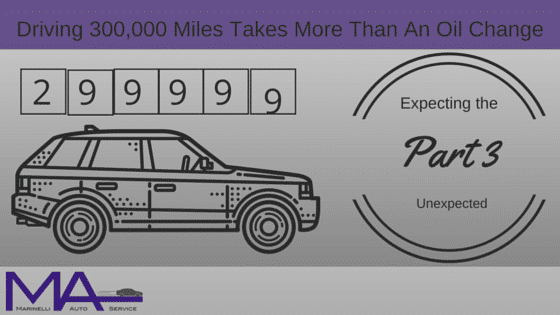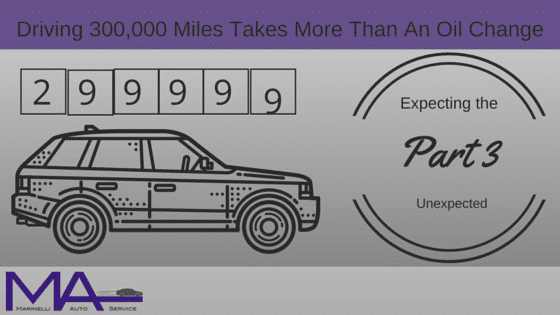Have you ever come across a vehicle with 300,000 miles on its odometer and wondered about its longevity? It’s a milestone that many might view as an indication of impending mechanical failure, but is that necessarily true? The answer might surprise you, as modern engineering and regular maintenance have significantly extended vehicle lifespans.
Historically, surpassing 100,000 miles was considered the end of a car’s life. However, today’s vehicles are built with more durable materials and advanced technology which has made hitting the 300,000-mile mark more common. For those who adhere to regular maintenance schedules, this high mileage can indeed be a testament to the car’s reliability and the owner’s diligence.

Is 300,000 miles on a car bad?
Reaching 300,000 miles on a car’s odometer is a notable milestone. Some may assume that it indicates significant wear and tear, but that isn’t always the case. Modern vehicles are built with advanced technology, making high mileage more achievable. Regular maintenance plays a crucial role in extending the lifespan of any car. A well-maintained vehicle can still perform reliably despite high miles.
Certain makes and models are known for their longevity. Brands like Toyota and Honda often make it past the 300,000-mile mark. Owners who follow the manufacturer’s recommended service schedule tend to see longer-lasting vehicles. Important maintenance tasks include oil changes, brake pad replacements, and tire rotations. Such routine care can prevent major mechanical issues.
Of course, high-mileage cars may face some age-related problems. Common issues include worn-out suspension parts and electrical system failures. Fixing these problems can be costly. However, many owners find it cheaper than purchasing a new vehicle. It’s all about balancing maintenance costs with the benefits of keeping the car.
When considering whether a 300,000-mile car is “bad,” think about its history and condition. Has it been serviced regularly? Are there any signs of major mechanical failures? Gathering information about the car’s past can help you make an informed decision. With proper care, even a vehicle with high mileage can still offer reliable transportation.
Defining High Mileage in Modern Vehicles
High mileage can be a subjective term. Traditionally, reaching 100,000 miles was a significant milestone for any vehicle. However, advances in automotive technology have shifted this perspective. Today, many cars are designed to last well beyond 150,000 miles. High mileage now often refers to vehicles surpassing 200,000 or even 300,000 miles.
Several factors determine whether a car can reach high mileage. The make and model play a crucial role. Some brands are renowned for producing long-lasting vehicles. Proper maintenance is just as important in extending a car’s life. Routine tasks like oil changes, tire rotations, and fluid checks are essential.
Modern engines and transmissions are built to sustain higher mileage. Manufacturers use better materials and more advanced engineering techniques. This results in cars that can endure more wear and tear over time. It’s not uncommon to see cars running efficiently with high mileage. This durability reflects the significant improvements in automotive manufacturing.
Owners’ habits also impact a car’s lifespan. Regular, short trips can cause more wear than longer, steady drives. Highway driving is generally less taxing on a vehicle. Keeping the car in a garage can protect it from the elements. Combine these habits with regular maintenance, and high mileage becomes a realistic goal.
The Role of Regular Maintenance in Extending Car Lifespan
Regular maintenance is crucial for extending the lifespan of any vehicle. Simple tasks like oil changes and tire rotations can make a big difference. These routine checks help in identifying potential issues before they become major problems. A well-maintained car is less likely to experience unexpected breakdowns. This can save both time and money for the owner.
Ignoring maintenance can lead to severe mechanical issues. For instance, failing to change the oil can result in engine damage. Over time, old oil loses its effectiveness. This can cause the engine parts to wear out faster. Regular oil changes keep the engine running smoothly.
Tire maintenance is another important aspect. Properly inflated and rotated tires ensure even wear and tear. This helps in maintaining good fuel efficiency and handling. Neglecting tire care can lead to uneven wear and reduced tire life. Regular checks can also identify alignment and suspension issues.
Maintenance also involves keeping an eye on fluid levels. These include brake fluid, coolant, and transmission fluid. Low fluid levels can affect the performance and safety of the car. Regularly checking and topping off these fluids ensures that the car runs efficiently. This contributes to a longer vehicle lifespan.
Typical Issues Arising at the 300,000-Mile Mark
Reaching the 300,000-mile mark means that some components are likely to show wear and tear. Common problems include aging suspension parts. These components, like shocks and struts, may need replacement to maintain a smooth ride. Electrical issues also become more frequent with high mileage. From failing sensors to wiring problems, these glitches can affect performance.
The engine and transmission are vital parts that often face challenges. High-mileage vehicles may experience oil leaks or reduced efficiency. Transmission problems, like slipping gears, are not uncommon. Regular servicing can help spot these issues early. However, even with regular care, these components eventually need attention.
Fluids are another area of concern. Over time, the effectiveness of fluids like coolant and brake fluid diminishes. Regularly changing these fluids can prevent bigger problems. Low or old fluids can lead to overheating or brake failure. Keeping an eye on fluid levels is essential for safe driving.
Another frequent issue is with the exhaust system. Rust and corrosion can cause damage over the years. Mufflers and catalytic converters may need replacement. Exhaust leaks are not only noisy but can also be dangerous. Ensuring the exhaust system is in good shape is important for both performance and safety.
High-mileage cars often have worn-out interior features. Seats, dashboard electronics, and climate control systems can show signs of use. While these issues are not always critical, they can affect comfort. Upgrading or repairing these components can enhance the driving experience. Regular inspection helps in spotting wear early.
Finally, the timing belt or chain becomes a concern. If it snaps, it can cause significant engine damage. Manufacturers often recommend replacing this component at specific intervals. Ignoring this can lead to costly repairs. Regular maintenance can prevent this from becoming a major issue.
How Vehicle Type and Use Affect Longevity
The type of vehicle plays a significant role in its longevity. Sedans, SUVs, and trucks each have different construction and usage patterns. Generally, commercial trucks are built to last longer due to their heavy-duty nature. SUVs often have more durability features than average sedans. However, sedans can last a long time with proper care and regular maintenance.
How a vehicle is used also affects its lifespan. Vehicles driven primarily on highways tend to last longer. Highway driving is easier on the engine and brakes compared to city driving. City driving involves frequent stops and starts, which can wear out parts faster. Owners who use their vehicles for long-distance travel often see fewer issues over time.
Routine use also influences wear and tear. A car used for daily commuting will experience different stress levels than one used for occasional trips. Consistent short trips can strain the engine more than longer, steady drives. This repeated stress can impact various components such as the battery and exhaust system. Balancing the type and frequency of use can help maintain vehicle longevity.
Some vehicles are designed for specific tasks, which can also impact their lifespan. For instance, off-road vehicles have components built to withstand rough terrains. Regular cars driven off-road are likely to wear out faster. Specialized vehicles often require specific maintenance routines. Following these guidelines ensures they last as long as designed.
Incorporating regular maintenance schedules also helps in extending a vehicle’s life. No matter the type of vehicle or its use, consistent care is essential.
- Oil changes
- Brake checks
- Fluid top-offs
Keeping up with these routines can prevent premature wear and major repairs. Prioritizing maintenance ensures a longer, healthier vehicle lifespan.
Decision-Making Tips for High-Mileage Vehicles
When considering a high-mileage vehicle, there are a few key factors to evaluate. First, check the vehicle’s maintenance history. A well-documented service record can indicate that the car was cared for properly. Look for regular oil changes, brake services, and other routine maintenance. This often suggests the car is in better condition.
Another important aspect is the condition of the major components. Pay close attention to the engine and transmission. These are costly to repair and replace, so ensure they are functioning well. Take the car for a test drive to evaluate performance. Listen for any unusual sounds and observe how smoothly it operates.
The exterior and interior condition also matter. Check for signs of rust, dents, or interior wear. While these do not always affect performance, they can indicate how the car was treated. A clean, well-maintained appearance often reflects a car that was cared for. Any significant damage might suggest neglect.
Consider where and how the vehicle was used. Cars used primarily for highway driving generally have less wear. City-driven cars may have more stress from stopping and starting. Additionally, find out if the car was used for towing or off-road driving. This can put extra strain on the vehicle’s components.
A pre-purchase inspection by a trusted mechanic can be very valuable. They can identify hidden issues that might not be obvious during a test drive. This reduces the risk of unexpected repairs. It’s a small investment that can save a lot of money and hassle in the long run. Having a professional opinion can make a big difference.
Conclusion
In summary, reaching 300,000 miles on a vehicle is a notable achievement that speaks to the quality of modern automotive engineering. While high-mileage cars may face more wear and tear, regular maintenance can significantly mitigate these issues. Proper care and diligent attention to detail can extend a car’s life well beyond traditional expectations.
When evaluating high-mileage vehicles, it’s crucial to consider their maintenance history and current condition. Factors such as driving habits and vehicle type also play important roles in longevity. With the right approach, even a car with extensive mileage can remain a reliable and valuable asset.


Leave a Reply